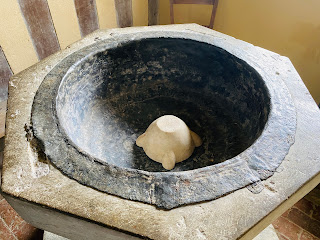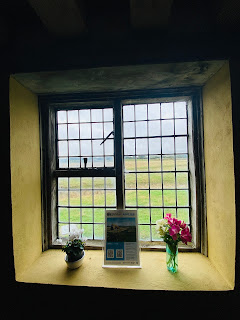Records suggest that a church has occupied the site from the 13th Century as there was a visitation in 1294. The church was of light construction and was replaced by a timber and plaster structure in the 14th Century. Bricks were added recently and extensive reconstruction took places after 2000. Most of the ancient timbers are intact. The causeway was added at this time as previously it was only accessible by boat during floods.
It is stated at Thomas a Becket stayed in the area which is still known as Becket’s Innings. The nearby farm is Becket’s Barn. After his assassination in 1170 he was canonised in 1173. There seems to be a claim that this is Kent’s smallest church but Seasalter St. Alphege dispute this despite being a bigger building.
The church holds only one gravestone which is inside the building. John Beale (1712-1775) has a flat stone in the west end of the church. He is remembered as son of William & Sarah Beale of Stone in the Isle of Oxney (approximately five miles from the church). John’s Find A Grave memorial is here.
The Font is believed to be medieval and made of Kentish Ragstone around the 15th Century. It is the only hexagonal bowl in a Kent church.
The pews and three decker pulpit originate from the 18th Century. The three decker pulpit is again, the only one of its kind in Kent.
Access to the church is limited. The key can be collected from the farmhouse wall close by (see photo). Dogs need to be controlled (I’m not a dog owner so follow best practice regarding dogs and livestock) as there are many sheep in the fields. It’s also good to wear wellies or old shoes as the field is covered in sheep poop/pellets - it’s pretty much impossible not to step in it. Parking is also limited - there is probably space for three cars on the road at the side.

















































No comments:
Post a Comment